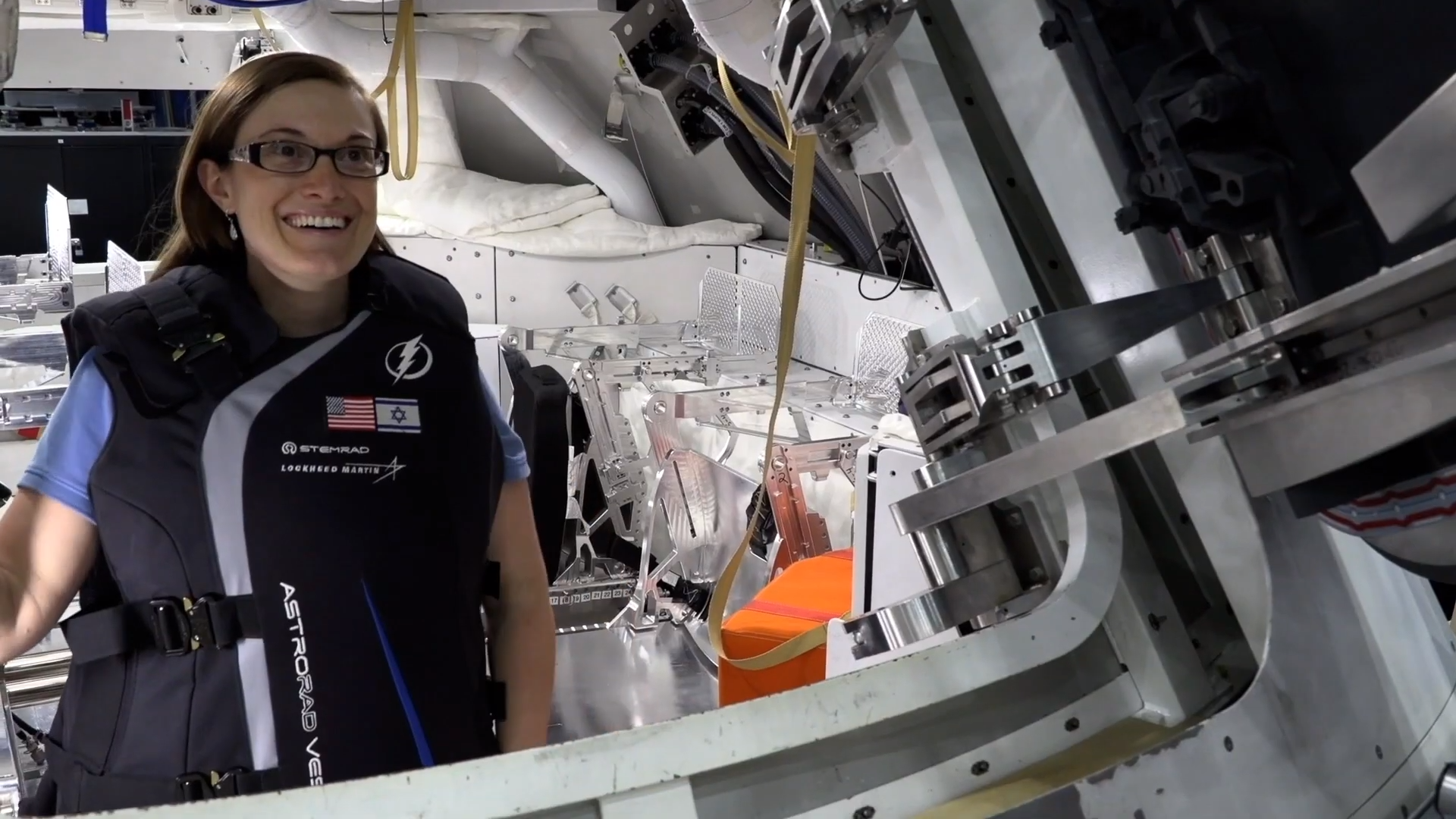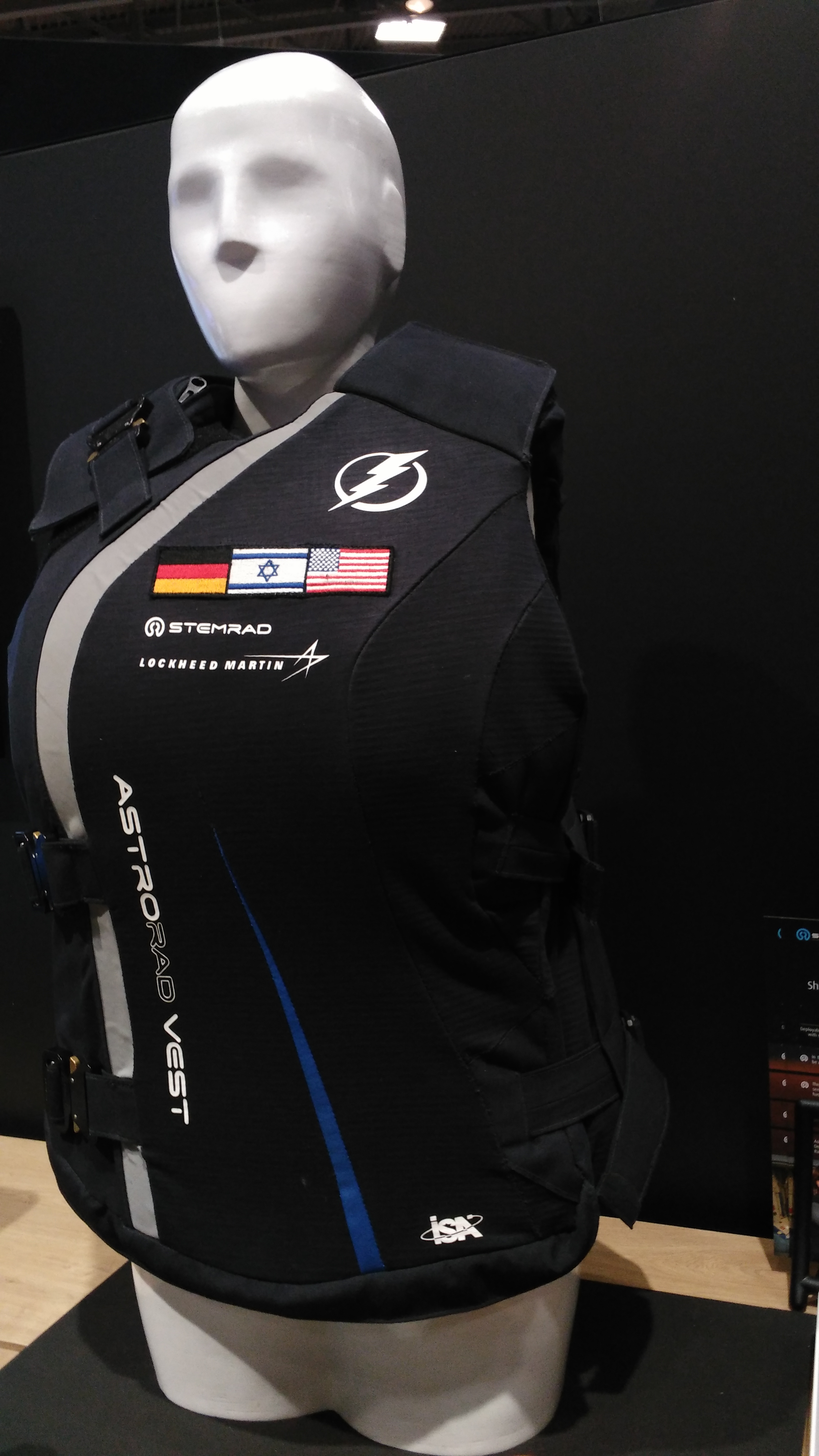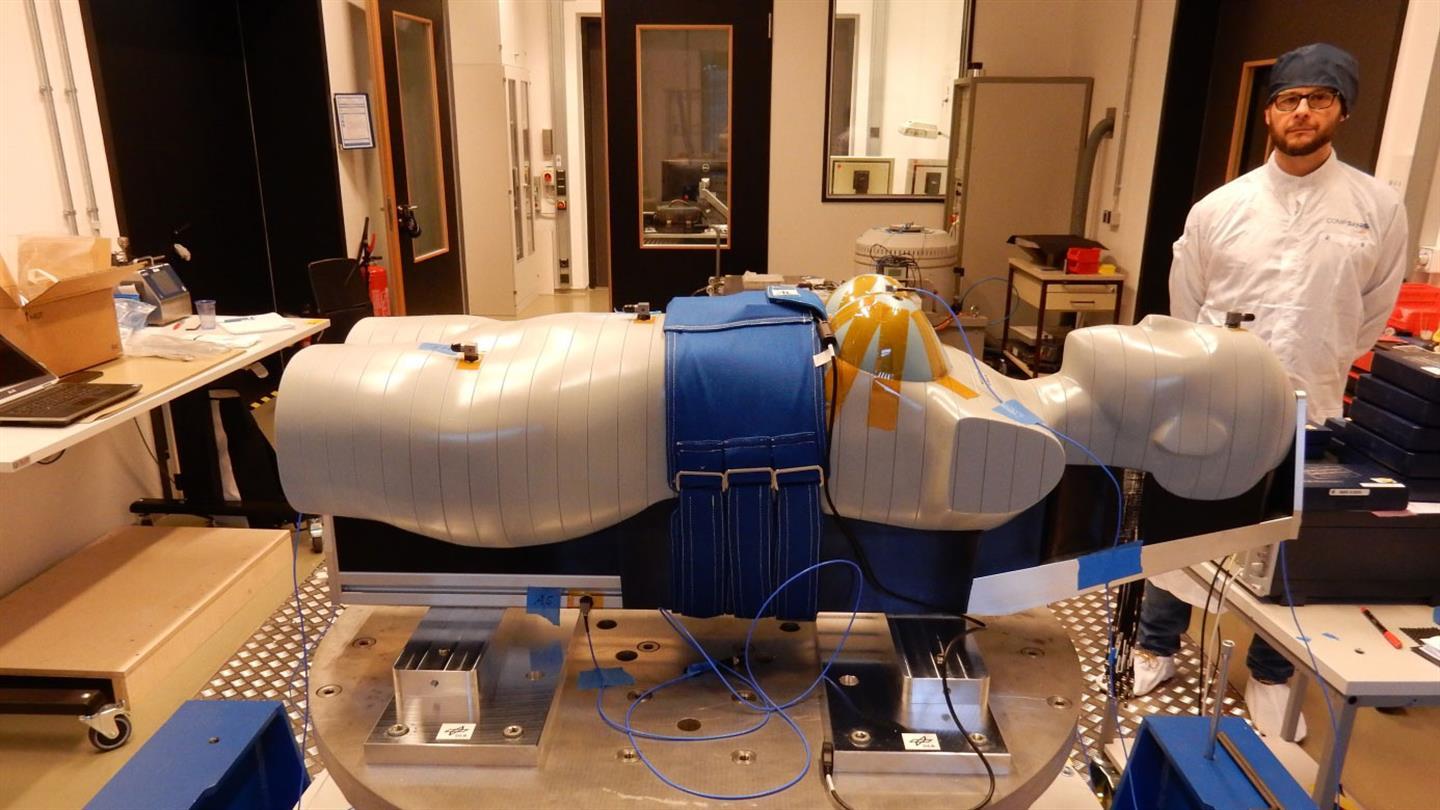'Phantom' Vest-Wearing Dummies to Fly Around the Moon
WASHINGTON — "Phantom women" dummies will make a trip around the moon in 2020 or so on a special mission: to protect all astronauts from radiation.
Each dummy will take up one seat in the Orion spacecraft during Artemis 1, a crewless NASA test mission that is integral to the agency's plans to land the first woman and the next man on the moon by 2024. One of the dummies, named Zohar, will sport a radiation-shielding vest called StemRad. The other, Helga, will go without protection. They are both "phantom" dummies, meaning they will include sensors to measure the amount of radiation coming at them from the sun and from deep space.
Before this moon-bound mission takes off, however, a version of StemRad is already on board the International Space Station, thanks to a launch aboard a Northrop Grumman Cygnus cargo spacecraft in November. If all goes according to plan, astronauts on the orbiting laboratory will perform ergonomics tests with StemRad late this year or in early 2020. This testing will make sure that the 57-lb. (26 kilograms) vest will not interfere with astronauts' day-to-day activities.
Video: AstroRad Vest - Protecting Astronauts from Radiation
Related: Anti-Radiation Vest to Get Deep-Space Test Next Year

If all goes well, this two-part experiment could culminate with future astronaut crews wearing a version of StemRad during extreme radiation events like strong solar flares. However, no missions are scheduled to fly with the vest yet beyond Artemis 1. The vest is designed to protect humans from radiation-poisoning effects that can lead to many health problems, including sudden death.

"We are very happy to fly [StemRad] on this mission," Thomas Berger, team leader of the biophysics group at the German Aerospace Center (DLR), told Space.com at the International Astronautical Congress on Oct. 23. Berger is the principal investigator of the dummy test that will fly on Artemis 1, formally known as the Matroshka AstroRad Radiation Experiment (MARE).
Berger said that the team — which includes representatives from the Israeli Space Agency, DLR and Lockheed Martin (among many others) — was grateful to have the opportunity to fly. This investigation will take up a lot of physical space on the Artemis 1 mission, since the dummies will occupy two seats, and the vest is bulky besides.
Get the Space.com Newsletter
Breaking space news, the latest updates on rocket launches, skywatching events and more!
The "secret sauce" of the vest is protection made of high-density polyethylene, a very popular plastic that is used for everything from bulletproof vests to children's toys. The vest is designed so that the material is much thicker over vital organs and sensitive areas. Berger said that the plastic used is one of the best materials to shield against particle events from the sun and the background radiation of space. There are other alternatives, but they're not nearly as easy to turn into effective clothing.
Polyethylene blocks are already used in the crew sleeping quarters on the American side of the space station to protect astronauts from radiation, Berger said, so it's "not like something totally out of the blue." The Russians, he added, use toilet paper on their side of the complex, which, with their high water content, is good protection against radiation.

StemRad is meant to protect the parts of the human body that are most sensitive to radiation, which include the breast, stomach, intestines, lungs, bone marrow and ovaries. The version flying on Artemis I is optimized for women's bodies, which may be more sensitive to radiation than men's bodies. But, as Berger said, in practical use, the vest can be easily adjusted to fit both male and female body shapes.
- In Photos: Antares Rocket Launches Cygnus NG-12 Cargo Craft
- Cygnus Spacecraft Departs Station, Begins New Mission in Orbit
- Space Launch Calendar 2019: Sky Events, Missions & More
Follow Elizabeth Howell on Twitter @howellspace. Follow us on Twitter @Spacedotcom and on Facebook.

Join our Space Forums to keep talking space on the latest missions, night sky and more! And if you have a news tip, correction or comment, let us know at: community@space.com.

Elizabeth Howell (she/her), Ph.D., was a staff writer in the spaceflight channel between 2022 and 2024 specializing in Canadian space news. She was contributing writer for Space.com for 10 years from 2012 to 2024. Elizabeth's reporting includes multiple exclusives with the White House, leading world coverage about a lost-and-found space tomato on the International Space Station, witnessing five human spaceflight launches on two continents, flying parabolic, working inside a spacesuit, and participating in a simulated Mars mission. Her latest book, "Why Am I Taller?" (ECW Press, 2022) is co-written with astronaut Dave Williams.
-
Mike'nSpace Too say that I'm disappointed in NASA/Boeing is like trying to keep a straight face and utter the phrase, "Politicians are tolerable". This is a PR stunt. Those devices will not do a thing expect add unnecessary weight to the flight profile. Seven astronauts times 57lbs is an extra 400lbs of equipment only utilized occasionally at a $10,795/lbs launch cost (ULA,https://www.bloomberg.com/graphics/2018-rocket-cost/); really? Why not incorporate that weight into the infrastructure as consumable shielding and leave the personnel unencumbered. Radiology lead aprons are only meant to protect against scatter radiation, not the direct beam (in the clinical setting). High energy particles will not be effected by such minuscule sheets of lead. Why not orientate the spacecraft towards the solar flares when the come up? By the way, all things SpaceX will employ on their human missions. Oh yes, PR. The tactic to show tax payers, "hey look at what we are doing to protect the astronauts...blah, blah, blah", is not unlike the Health department stating that if the algorithmic calculated dose after a computed tomography (CT) exam is below a certain amount, then the the CT is safe to have. That's crap. The average CT exam is 5000mAs; research and calculate the dose yourself and discover just what they are trying to pull over your eyes.Reply
Michael Dennis AAS, RT (R)(CT)(MRI) ARRT









